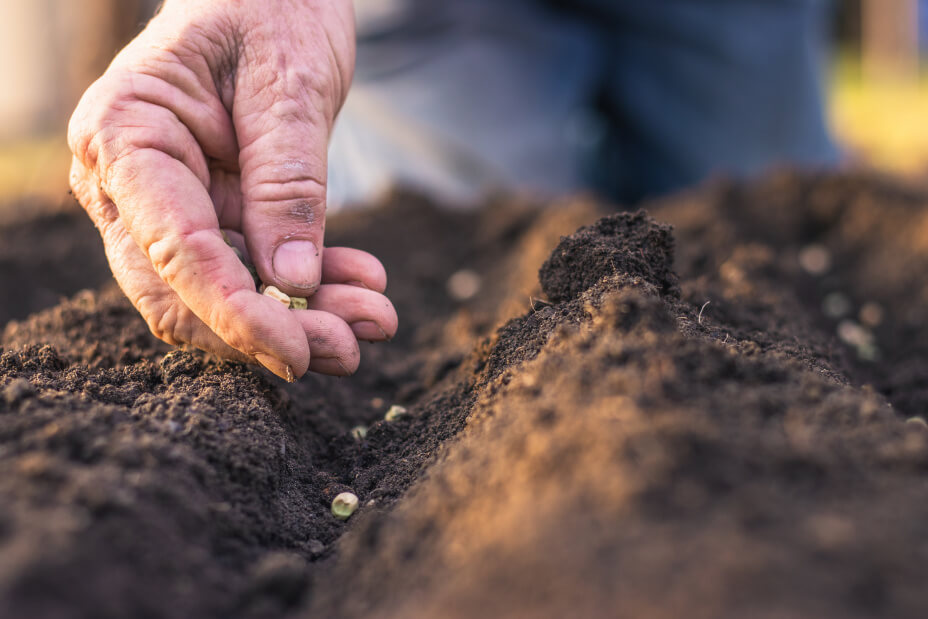Helping US and Canadian farmers get more from fertilizer

Helping US and Canadian farmers get more from fertilizer
As fertilizer prices surge and excess runoff contributes to dead zones and algal blooms, wheat, small grain and pulse farmers need financially and environmentally sustainable ways to get more from their inputs. Naturally derived, innovative inoculants can help.
Environmental concerns and tightening regulations meant that American and Canadian farmers were already pushing hard to get the most from fertilizer inputs. Recent price surges have increased the pressure. A family of innovative inoculants for wheat, small grains and pulses will help them get even more from less.
Canadian and American wheat, small grain and pulse farmers have a deep commitment to sustainable production. Most family farms have been passed down from generation to generation. Today’s farmers see themselves as stewards of the land for future generations. So, it’s unsurprising that so many US farmers take part in government-supported conservation programs. The same is true in Canada, where many farms implement provincial Environmental Farm Plan programs. In Ontario alone, an estimated 41,000 farms (about 80%) used these plans to support sustainable agriculture between 1992 and 2020.
The impact of excess nitrogen and phosphorus runoff

The impact of excess nitrogen and phosphorus runoff
Reducing fertilizer use is a key goal of American and Canadian farmers’ sustainability efforts. Many implement the 4R nutrient stewardship approach on their land. This encourages application of fertilizers from the right source, at the right rate and time, and in the right place. Despite this, from the Gulf of Mexico to Lake Winnipeg, excess nitrogen and phosphorus runoff from agriculture contribute to dead zones and harmful algal blooms.
Market and regulatory trends push farmers to get more from fertilizer

Market and regulatory trends push farmers to get more from fertilizer
Farmers’ commitment to applying fertilizer sparingly has been reinforced by recent market trends. Fertilizer prices have skyrocketed globally. That’s left both American and Canadian farmers facing steep hikes. This, coupled with an increasingly stringent regulatory environment around fertilizer use patterns, is pushing farmers to get the very most from their fertilizer inputs.
Innovative innoculants increase the efficiency of fertilizer inputs
The most effective land stewardship solutions use nature’s own powerful problem solvers. That’s why Novozymes BioAg looked to nature for tools to improve fertilizer efficiency. The result is the BioniQ® family of inoculants. These innovative products use active biologicals including penicillium bilaiae, bacillus amyloliquefacien, trichoderma virens and rhizobium leguminosarum. These increase access to nitrogen, phosphate and potassium. They also improve crops’ use of these vital nutrients. In addition, they work together to free phosphate bound in soil and fertilizer, making it more available to the plant.
Enhanced mycorrhizal associations and nitrogen fixation potential
TagTeam® BioniQ® and TagTeam® BioniQ® Pro for pulses also improve nodulation. That results in enhanced nitrogen fixation potential. In addition, TagTeam® BioniQ® increases associations with soil mycorrhizae. That gives pulse crops increased accessibility to soil nutrients and improves water absorption.
Reduced fertilizer costs for a wide range of crops
BioniQ® targets all wheat crops and a wide range of small grains including corn, sorghum, canola, oats, mustard, barley and rye. By increasing nutrient availability, uptake and utilization in all these crops as well as pulses, the BioniQ® family of products support early vigor, plant health and stress tolerance. All these improve the yield potential of crops. The result is that American and Canadian farmers achieve higher return on investment on their fertilizer inputs and improved sustainability.
Find a solution to help your customers get the most from their fertilizer inputs